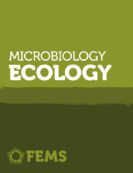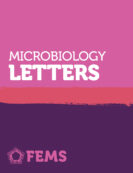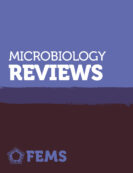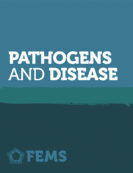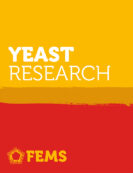FEMS Microbiology Letters Flash Presentation Award: Ainsley Beaton
We send our congratulations to Ainsley Beaton, who won the Flash Presentation Award at MMEG 2021, sponsored by FEMS Microbiology Letters.

The Molecular Microbial Ecology Group (MMEG) meeting was held on 1-2 December 2021 at the John Innes Centre in the UK. Ainsley’s winning flash presentation was on “Understanding the ecological functions of natural product antibiotics”.
Read our interview with Ainsley about her research below:
What is your current position, and what was your scientific journey to get there?
My current role is as a research assistant in Prof. Matt Hutchings group at the John Innes Centre in Norwich. Earlier this year I completed my PhD at the University of Strathclyde in Scotland in the lab of Dr Nick Tucker. My PhD was focused on genomics-based strain interrogation of industrially relevant micro-organisms which was how I began in the field of Streptomyces research leading to my current position.”
Could you describe the research your poster covered?
Our group is interested in the specialised metabolites produced by Streptomyces bacteria in nature and how we can utilise these in various ways. The work discussed in this presentation focused on two-component system (2CS) regulated antibiotic biosynthesis in Streptomyces. Streptomyces species are ubiquitous in soil and produce many specialised metabolites, but the evolutionary advantages for these in their biological niche is not well understood. Since many have antibiotic activity, knowledge of their regulation in response to extracellular signals could be key to discovering novel metabolites.
2CS consisting of a membrane bound histidine kinase detecting extracellular stresses, coupled with an intracellular response regulator that controls gene expression, are employed by bacteria to sense, and respond to their environment. The work discussed focused on a highly conserved 2CS in Streptomyces. Loss of this 2CS in S. coelicolor leads to increased production of the redox-active antibiotic actinorhodin. ChIP-seq, proteomics and phenotypic assays suggest that it is sensing the extracellular redox state and ensuring proper folding of secreted proteins. As such we propose that actinorhodin, although described as an antibiotic, is not produced to kill other bacteria but as part of a redox secretion stress response.”
What do you hope to focus your research on in the future?
We have a lot more to understand about this 2CS, how it senses redox stress, the impact this has on production of secondary metabolites and how to use this system to illicit the production of antibiotics not usually made under lab conditions. Future research will shed light on the functions of this and other 2CS in the controlling antibiotic production.
–
We use income from the FEMS Journals to fund grants, awards, and projects, and to support our knowledge sharing events and initiatives. Consider publishing your research with our journals to help the global microbiology community.
All but one of the FEMS journals are now fully open access (OA), with one journal, FEMS Microbiology Letters remaining a subscription journal with free-to-publish and OA options. Open access is key to supporting the FEMS mission of disseminating high quality research as widely as possible: when high quality, peer reviewed sound science is open access, anyone, anywhere in the world with an internet connection, can read it.

